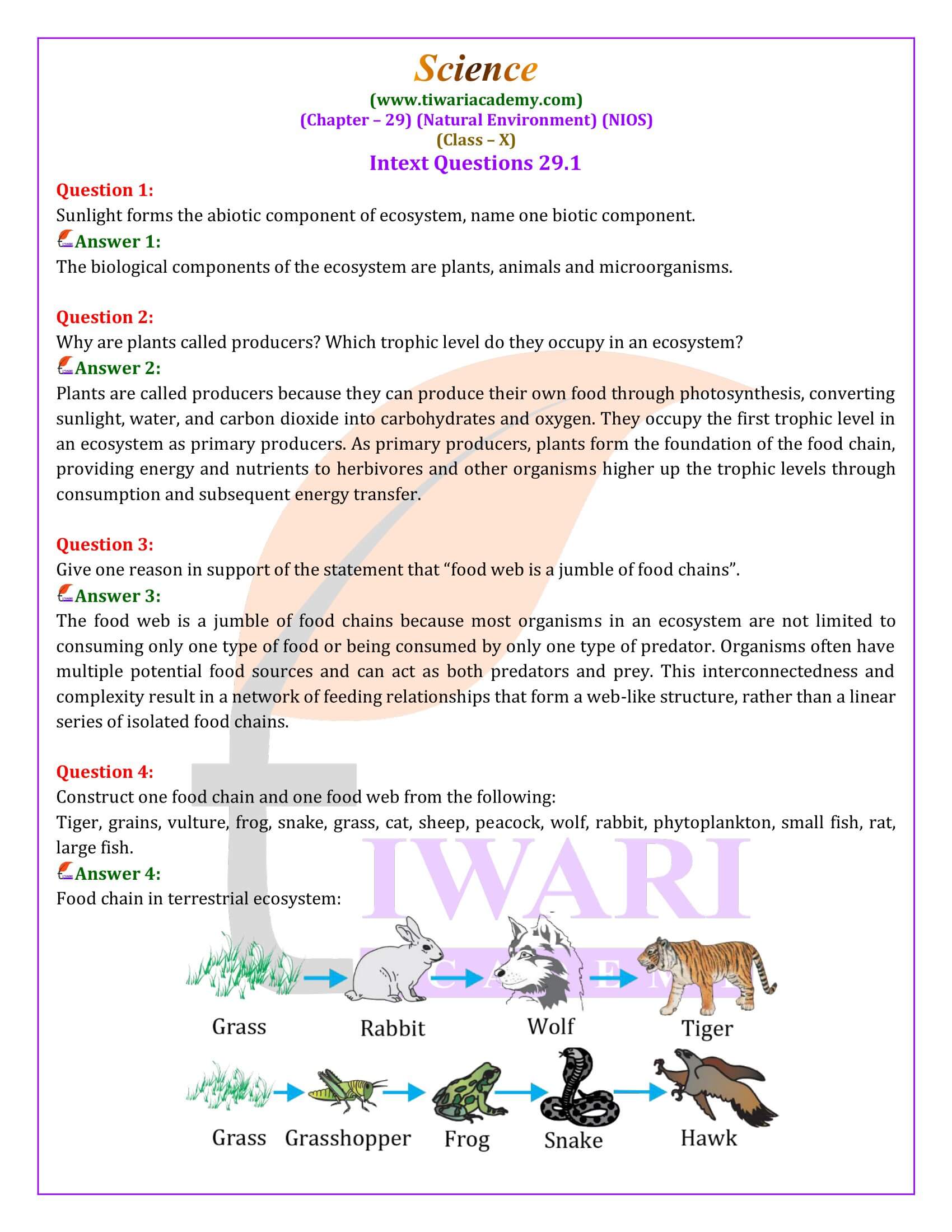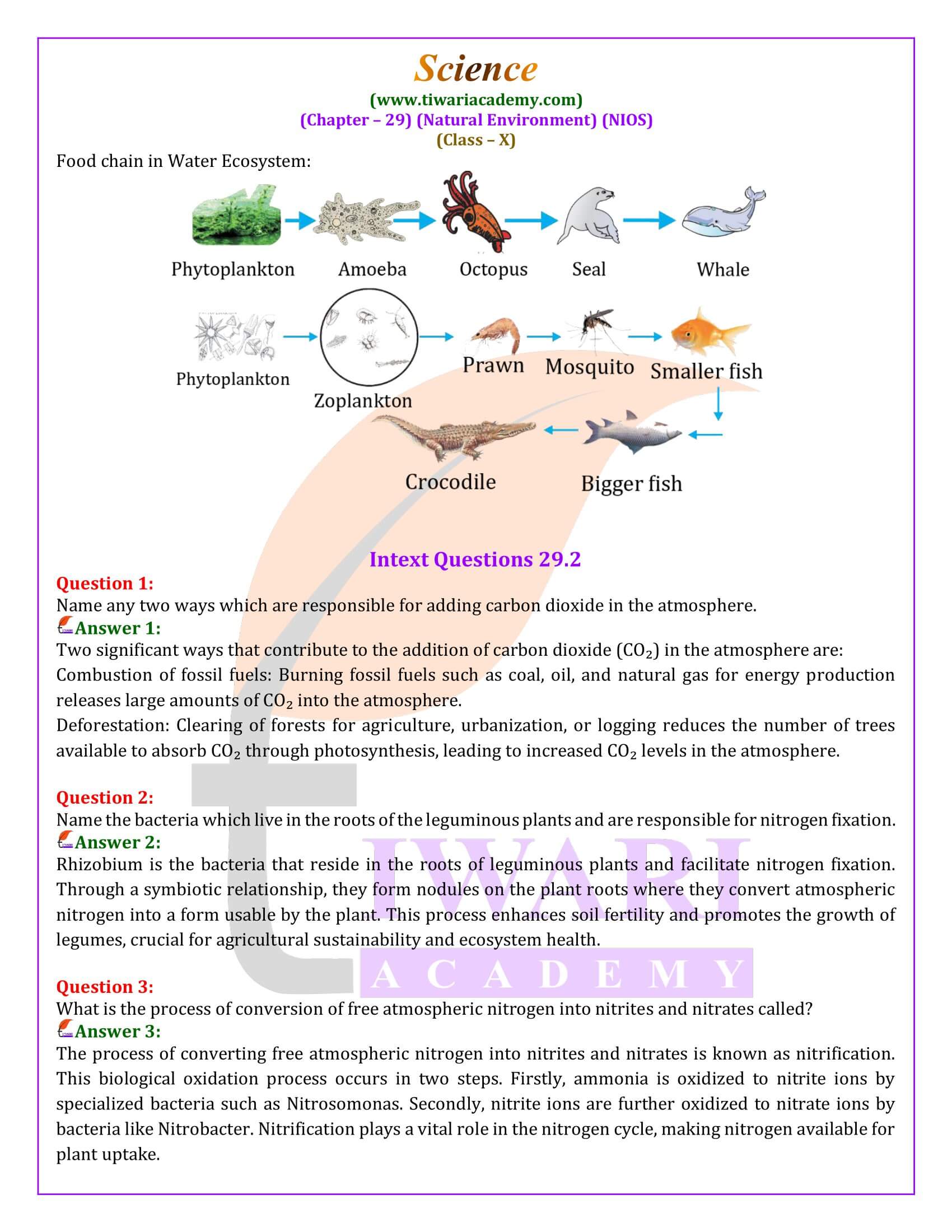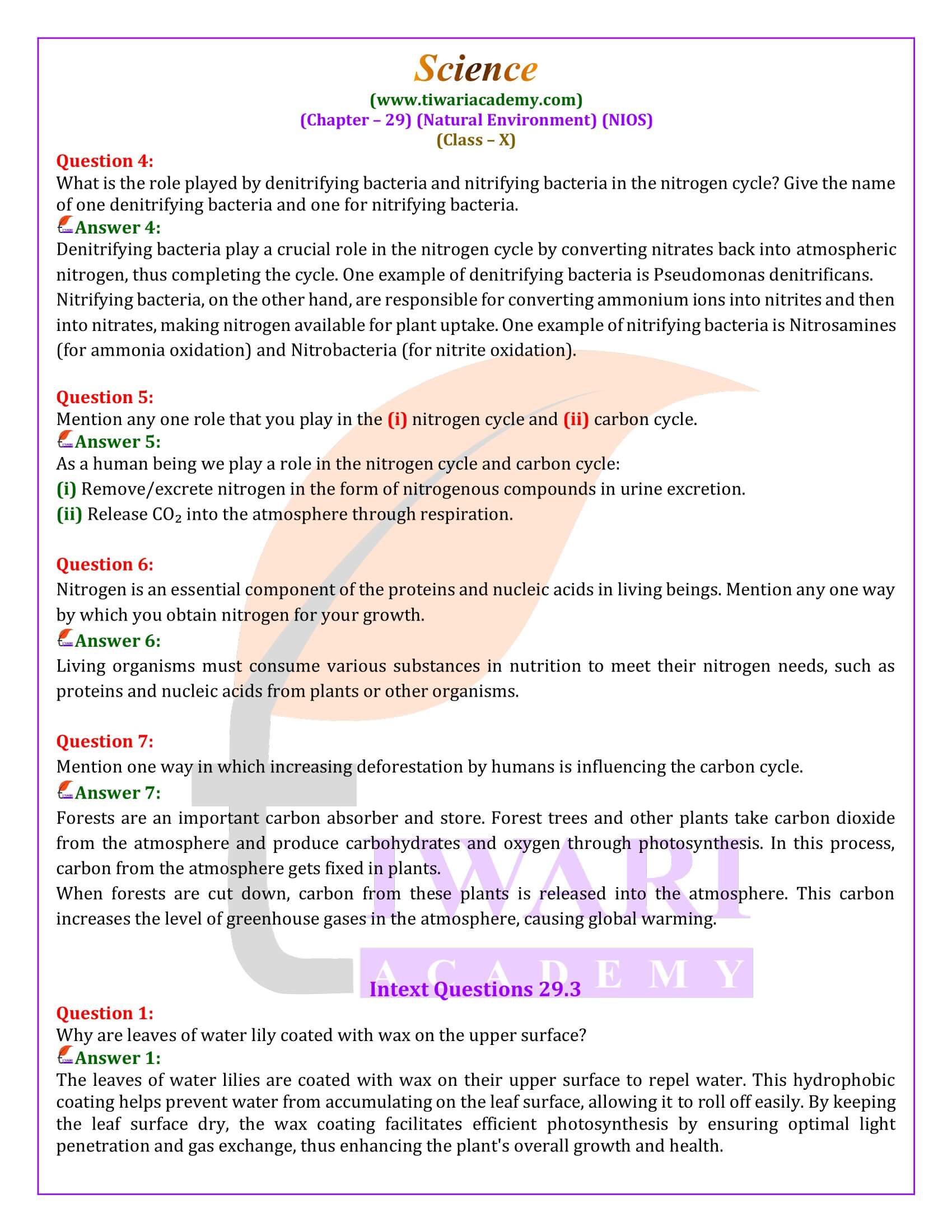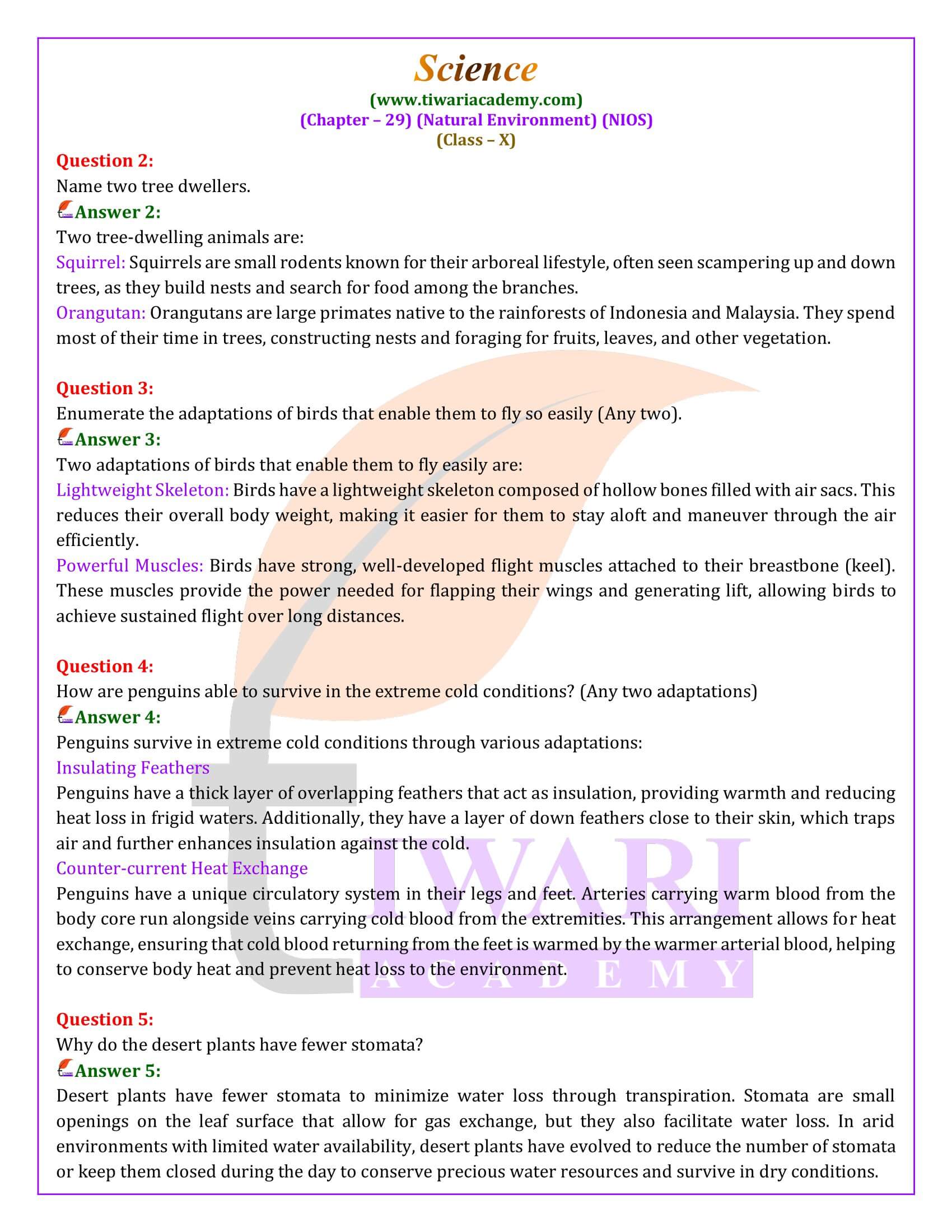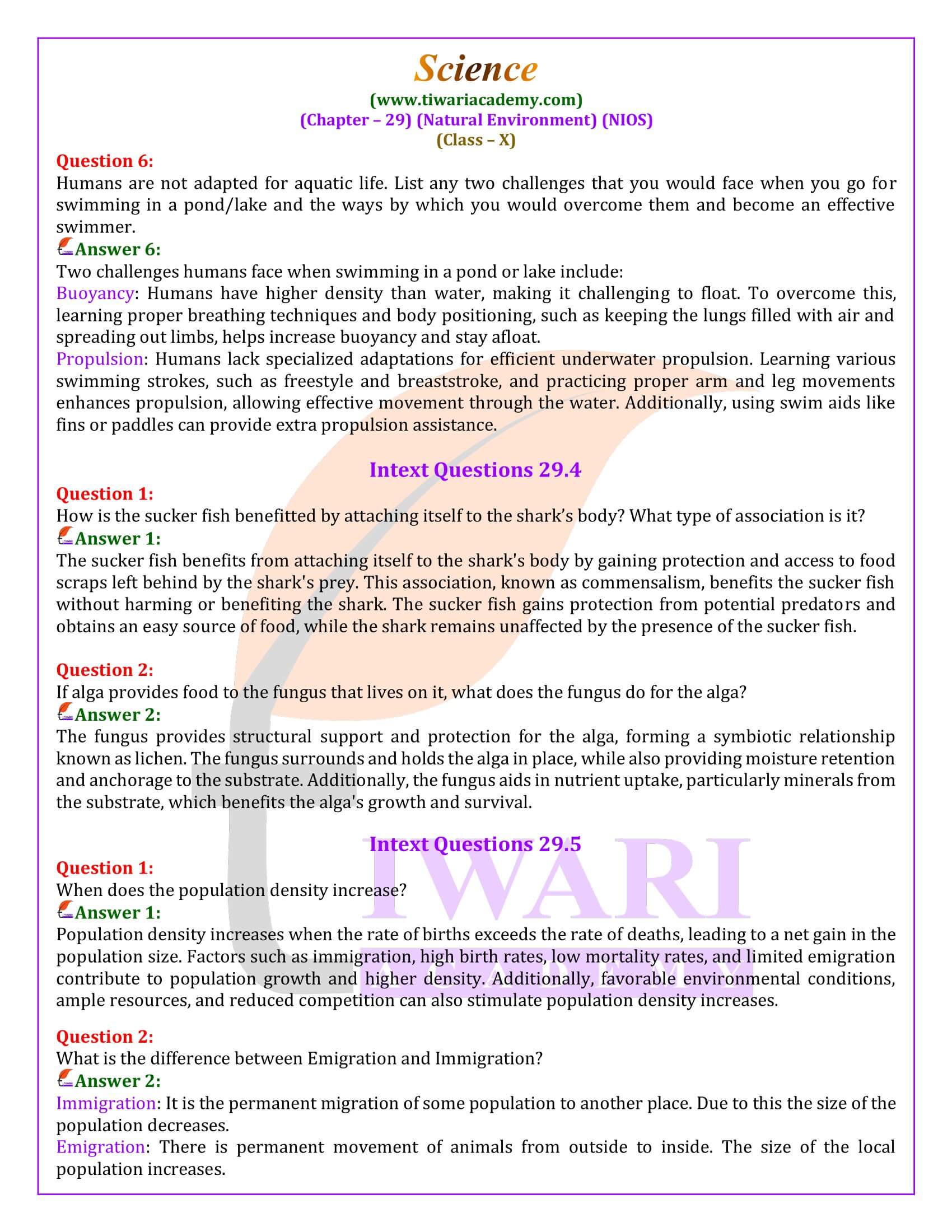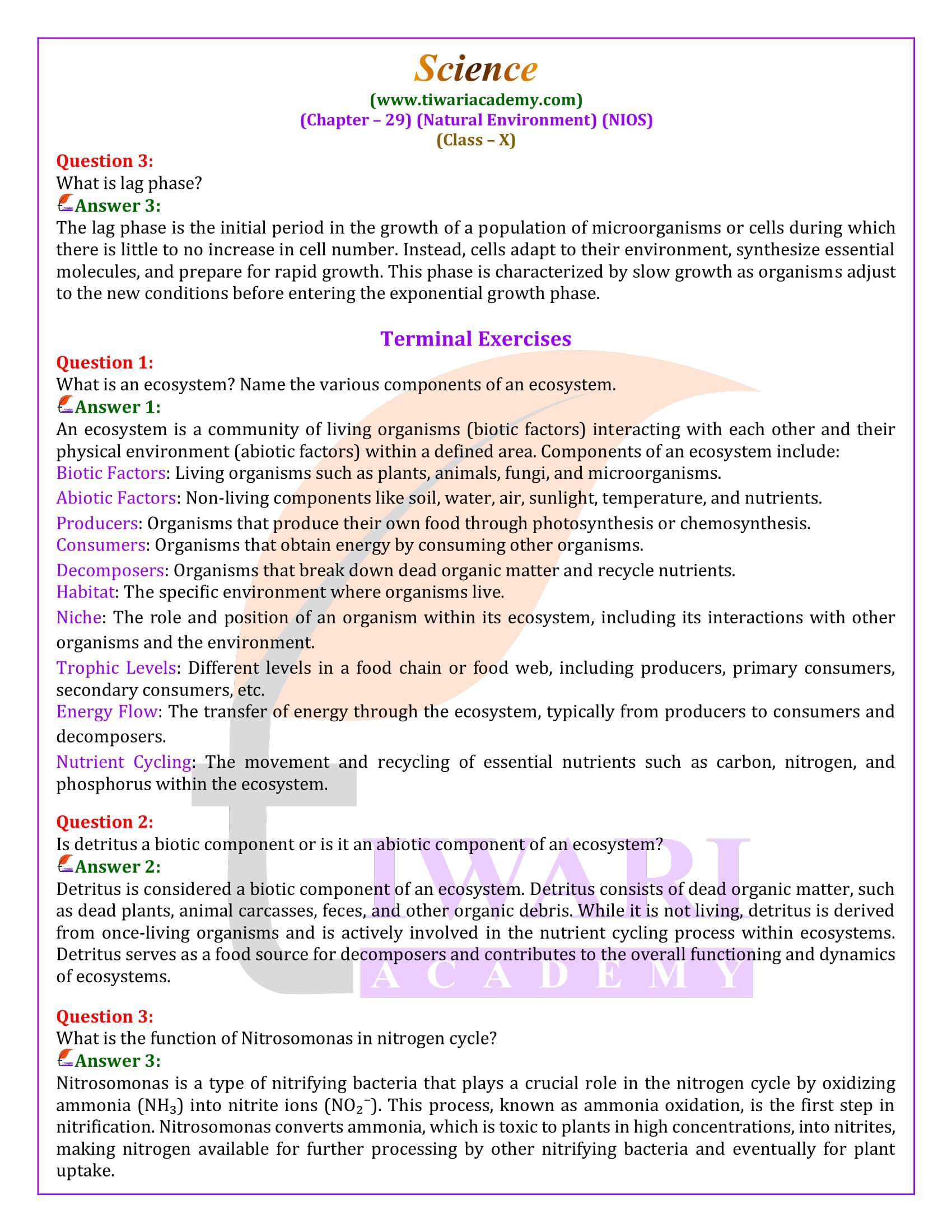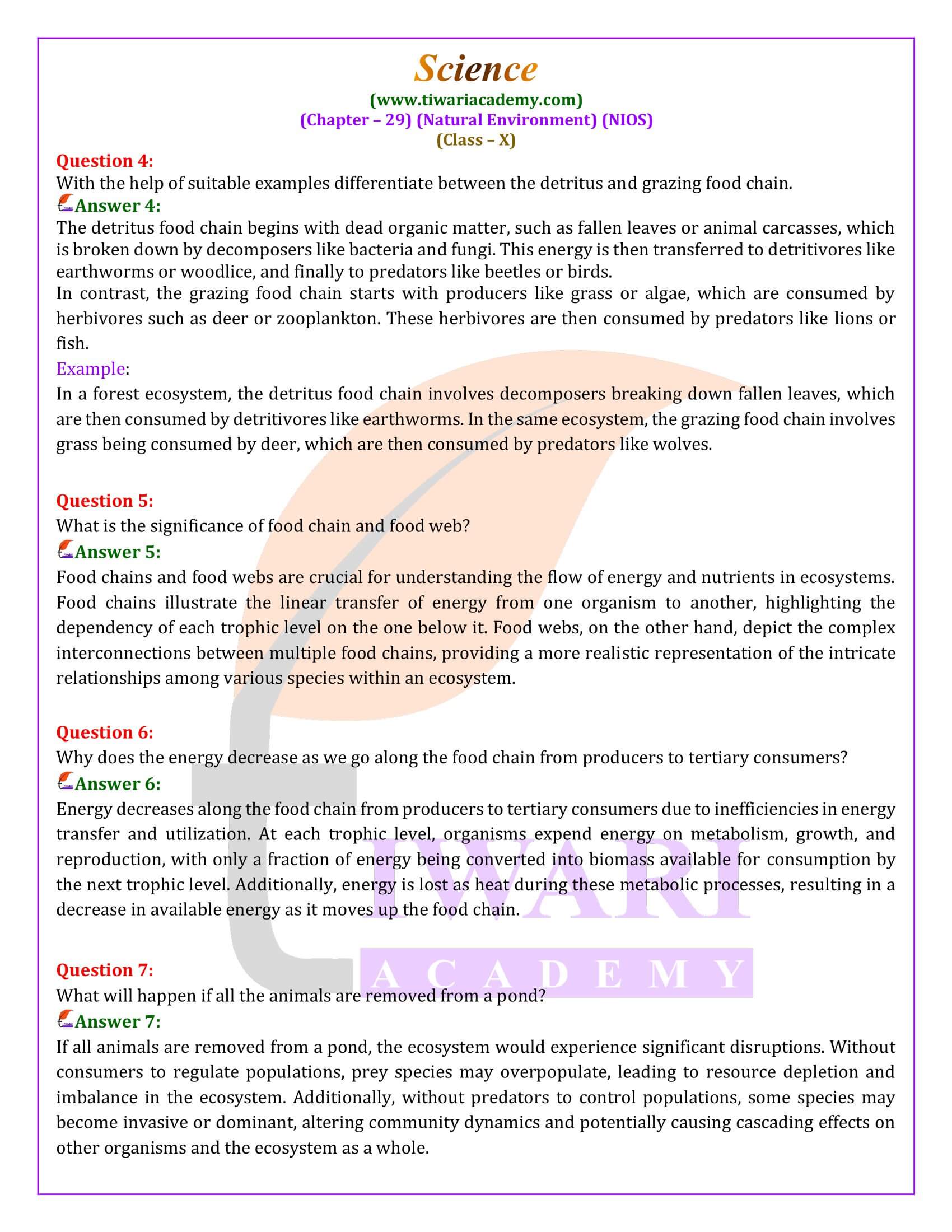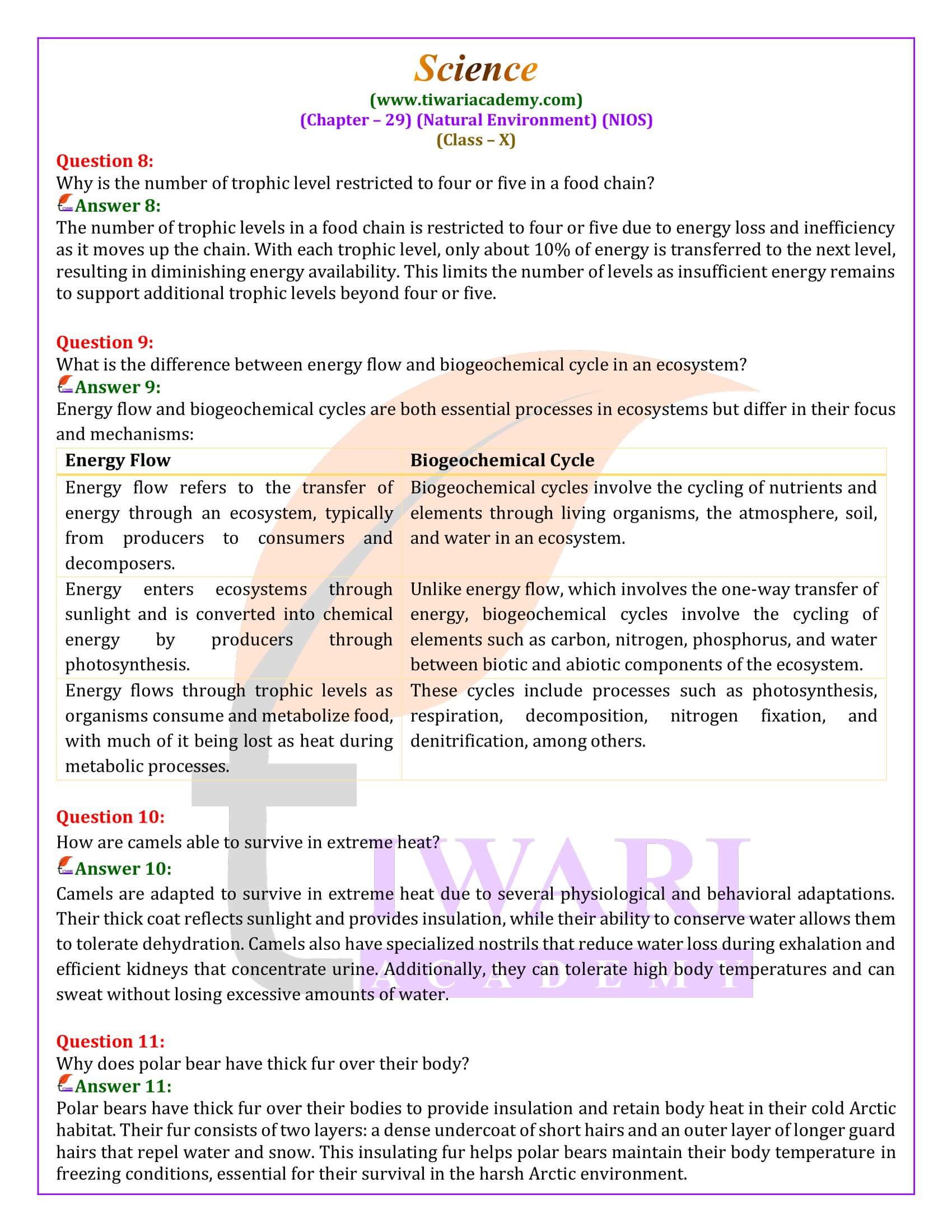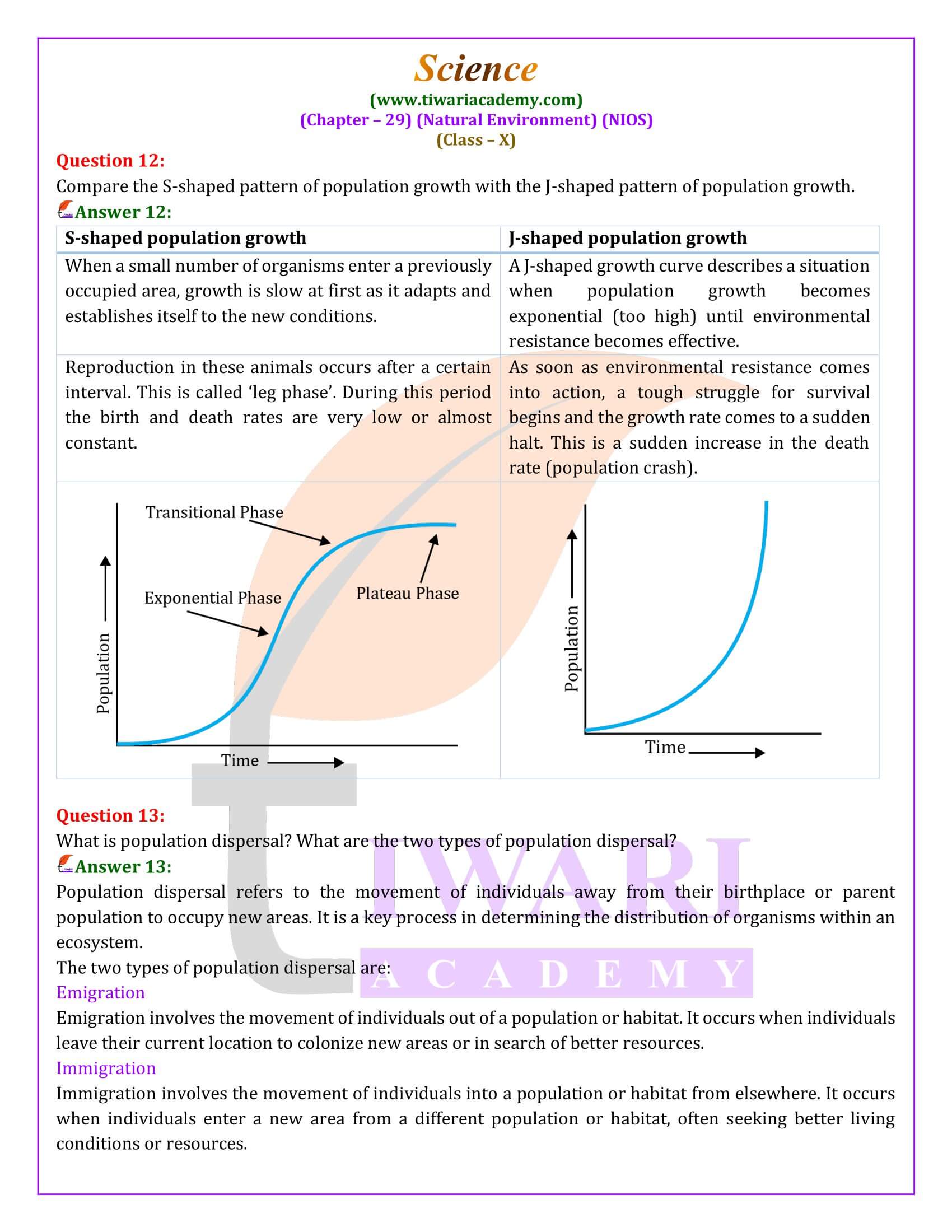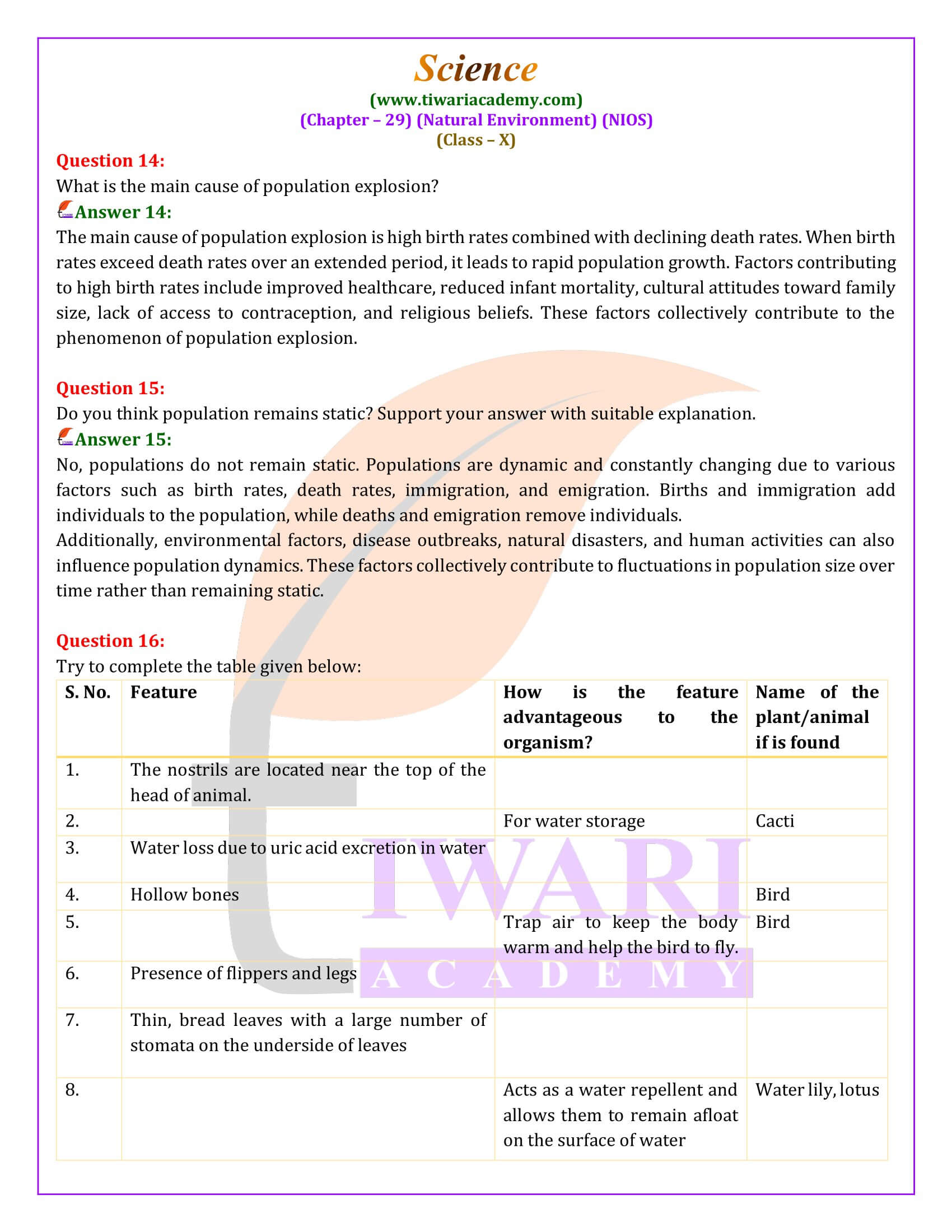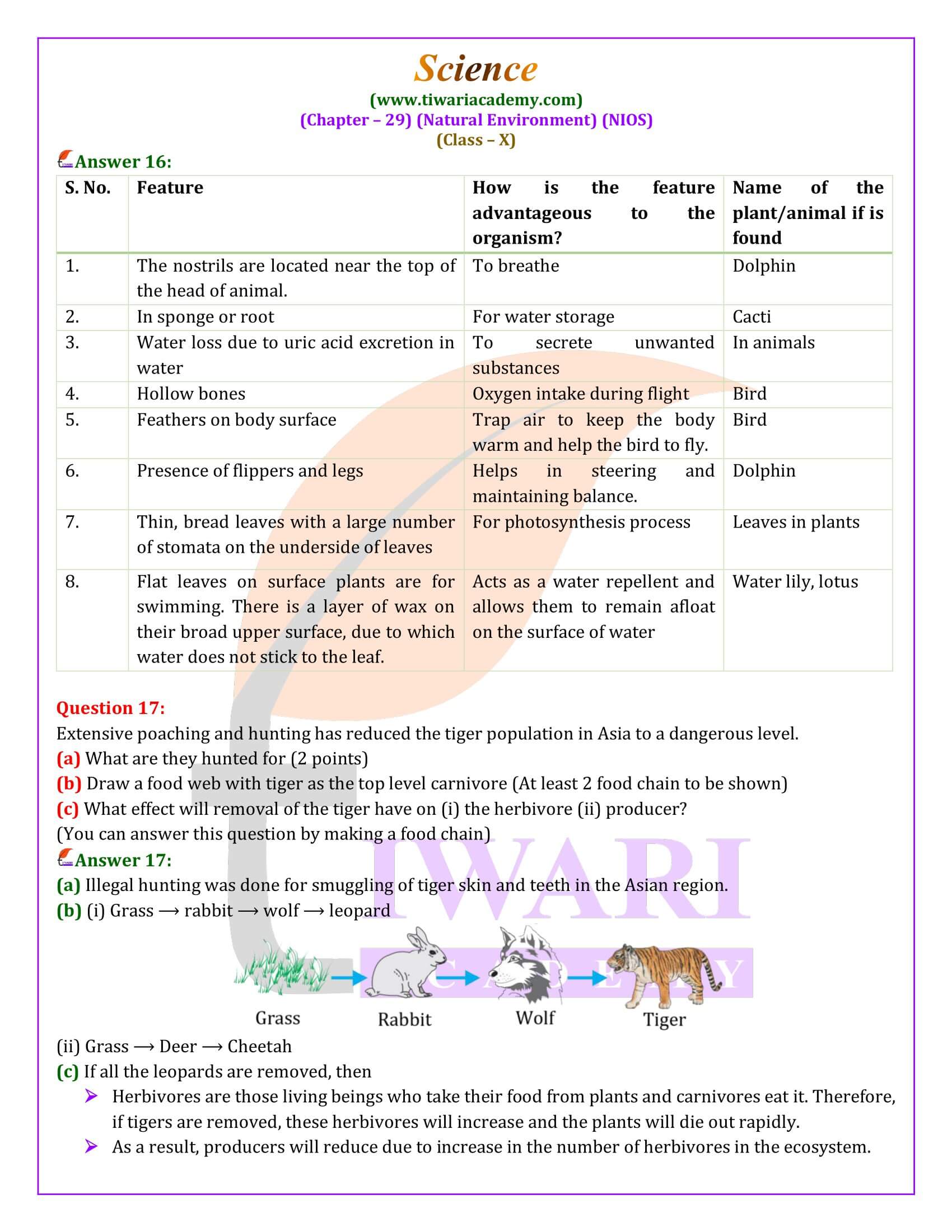NIOS Class 10 Science Chapter 29 Natural Environment in Hindi and English Medium revised and updated for new academic session 2025-26. All the question answers of NIOS Science chapter 29 for class 10 are given here in simple and easy format.
Overview of the Natural Environment
NIOS Class 10 Science Chapter 29 explains the intricate relationship between humans and the environment, exploring how ecosystems function and the crucial role they play in sustaining life on Earth. The environment encompasses everything around us—our homes, towns, natural landscapes, and the flora and fauna that inhabit these spaces. It is a complex network of living (biotic) and non-living (abiotic) components that interact continuously, influencing and being influenced by one another.
Ecosystem Dynamics and Components
NIOS 10th Science Chapter 29 introduces the concept of ecosystems, defining them as biological environments where living organisms interact with each other and with their physical surroundings. This interaction involves various components categorized as abiotic, such as sunlight, temperature, and water, and biotic, including plants, animals, and microorganisms. These elements are essential as they provide the necessary conditions for life and facilitate various processes like photosynthesis and nutrient cycling.
The Flow of Energy and Nutrient Cycles
A significant portion of Class 10 Science Chapter 29 is dedicated to explaining how energy flows through an ecosystem via food chains and food webs. It emphasizes the unidirectional flow of energy from producers (autotrophs) to various levels of consumers (heterotrophs) and decomposers (saprotrophs). This underscores the importance of understanding these interactions to appreciate how ecosystems maintain balance and support life.
The chapter 29 discusses biogeochemical cycles, including the carbon, nitrogen, and water cycles. These cycles illustrate how elements move through the ecosystem, highlighting the role of both natural processes and human activities in influencing these cycles. Understanding these cycles is crucial for managing and mitigating human impacts on the environment.
Biotic Interactions and Community Dynamics
NIOS Class 10 Science Chapter 29 explores different forms of interactions within biotic communities, such as mutualism, commensalism, and parasitism, explaining how these relationships affect the survival and reproduction of species. It also covers various adaptations that organisms have developed to thrive in their specific habitats, such as aquatic, terrestrial, and aerial adaptations, providing examples of how these adaptations help in energy conservation, feeding, and reproduction.
Human Impact and Conservation
The NIOS 10th Science Chapter 29 addresses the significant impact humans have on natural ecosystems, from altering biogeochemical cycles to contributing to habitat destruction and species extinction. It calls for a balanced approach to utilizing natural resources to ensure that these systems can continue to provide essential services for future generations. This includes sustainable practices that respect the carrying capacity of ecosystems and promote the conservation of biodiversity.
NIOS Class 10 Science Chapter 29 provides a comprehensive overview of how natural environments function, the interdependence of its components, and the impact of human activities. It serves as a crucial reminder of our responsibility to understand and protect the ecosystems that sustain life on Earth, emphasizing the need for education and conservation efforts to maintain ecological balance and ensure the health of our planet for future generations.
